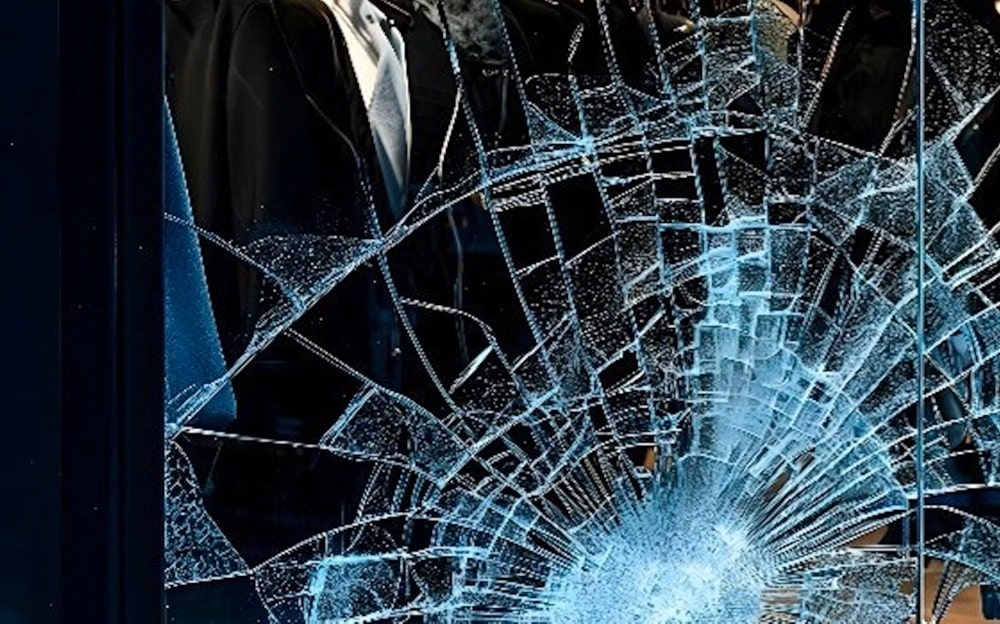While perimeter protection is a top priority in most security strategies, Optex says that one critical area often remains overlooked: the building facade.
Facades are often seen as mere structural features rather than potential risk zones, but recent incidents show just how critical they are to building security. Early this year, prehistoric gold treasures were stolen from a Dutch museum when burglars blasted through an unsecured door. In 2024 in London, a group of burglars smashed through the glass frontage of an Apple Store , bypassing traditional entry points entirely. And that same year in Southern Europe, there were multiple cases of intruders reaching the inside of critical sites through unsecured fire exists and unmonitored ventilation shafts. These are not isolated events, and they highlight how every entry point in a building, visible or hidden, can be a potential vulnerability.
Common vulnerabilities and high-risk zones
What makes facades particularly vulnerable is how many entry points are often out of sight and away from main access points. Doors used for fire escapes or staff access, loading bays, ventilation openings, side passages and utility access points are rarely manned and not always within surveillance coverage. Exposed elements like ground-floor windows and glass walls are an easy target for forced entry or vandalism. In many cases, these are the exact points where intrusions happen, not because security wasn’t planned, but because it wasn’t extended far enough.
The challenge isn’t just visibility of an intrusion; it’s the response time. Traditional video surveillance may capture the incident, but it often does so after the fact. Intrusion detection technologies offer a proactive alternative; they are designed to trigger alerts at the very moment an event begins, such as someone approaching a window, tampering with a lock, or attempting to cut through a wall. The result is a faster response and a greater chance of intervention before damage is done.
One of the key advantages of façade intrusion detection is the ability to act before any damage occurs. If an alarm is only triggered by an indoor sensor, it means an intruder has already breached the building, often causing costly damage to doors, windows, or structural elements in the process. In some cases, the cost of this damage can far exceed the value of the items being protected. By detecting suspicious activity at the façade level, security teams gain valuable time to respond, helping prevent entry altogether and reducing both risk and repair costs.
One of the key advantages of façade intrusion detection is the ability to act before any damage occurs. If an alarm is only triggered by an indoor sensor, it means an intruder has already breached the building, often causing costly damage to doors, windows, or structural elements in the process. In some cases, the cost of this damage can far exceed the value of the items being protected. By detecting suspicious activity at the façade level, security teams gain valuable time to respond, helping prevent entry altogether and reducing both risk and repair costs.
Smart volumetric detection
For small zones like windows, balconies or fire exits, outdoor narrow PIR detectors offer an ideal solution. Compact and discreet, short-range PIR sensors, such as its FTN series, can cover tight areas between 2m and 5m. Meanwhile, for larger areas, the BXS series provides up to 12m of detection on either side of the sensor, with independent left–right zone detection that enables accurate event verification.
Both FTN and BXS sensors are equipped with OPTEX’s unique SMDA logic and are known for their extremely low false alarm rates. Both series are ideal for wireless or hardwired setups, with simple mounting and a low-profile design that blends into architecture.
For broader perimeter applications, the Boundary Guard BX-100 PLUS is designed to protect building facades up to 30m, using infrared beam detection combined with a sounder to deter intruders before a break-in occurs.
This is just a snippet of Optex-Europe’s blog on its website, it also explores securing scaffolding during renovation works, 2D LiDAR for high-security environments, facade protected with Redscan Pro, detecting wall drilling and structural tampering, and finally, why a multi-layered approach works best.
Read the full blog, and explore how OPTEX intrusion detection technologies can strengthen your security, here.
For more Optex news, click here






